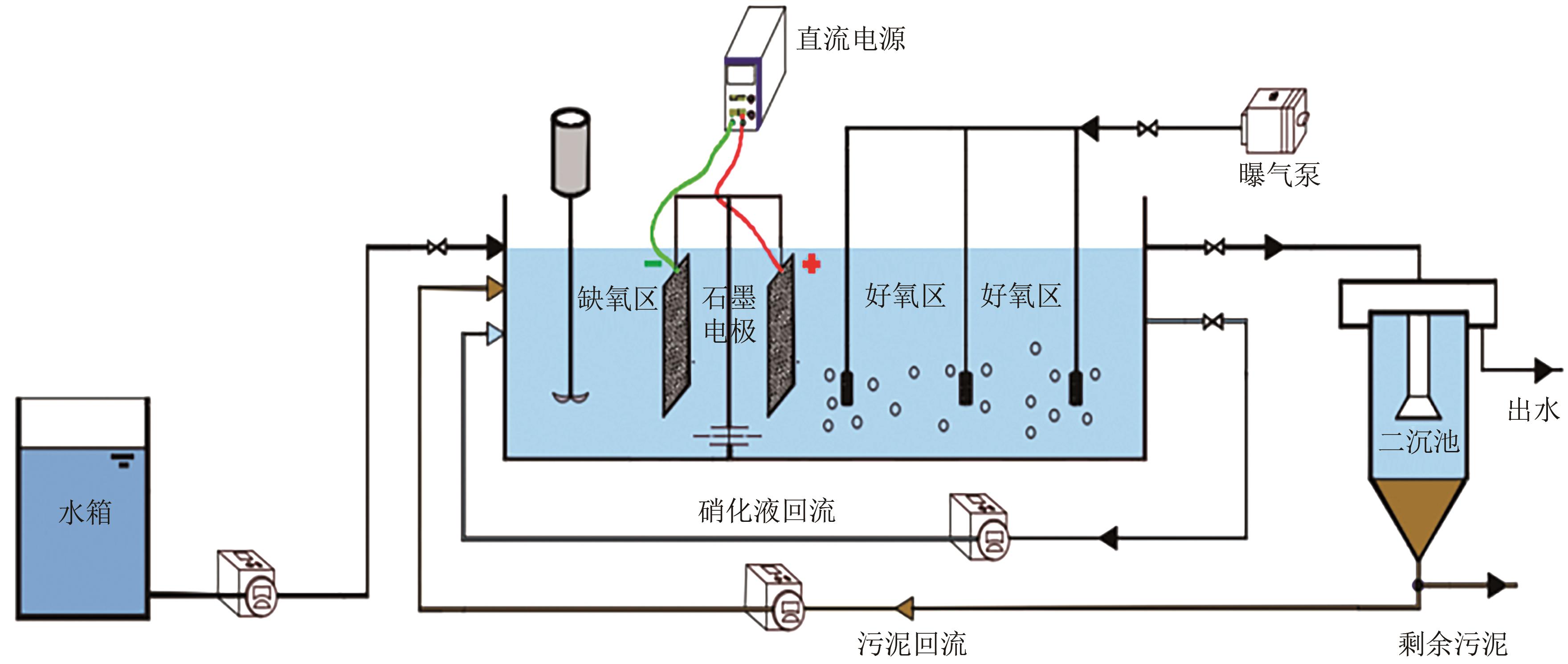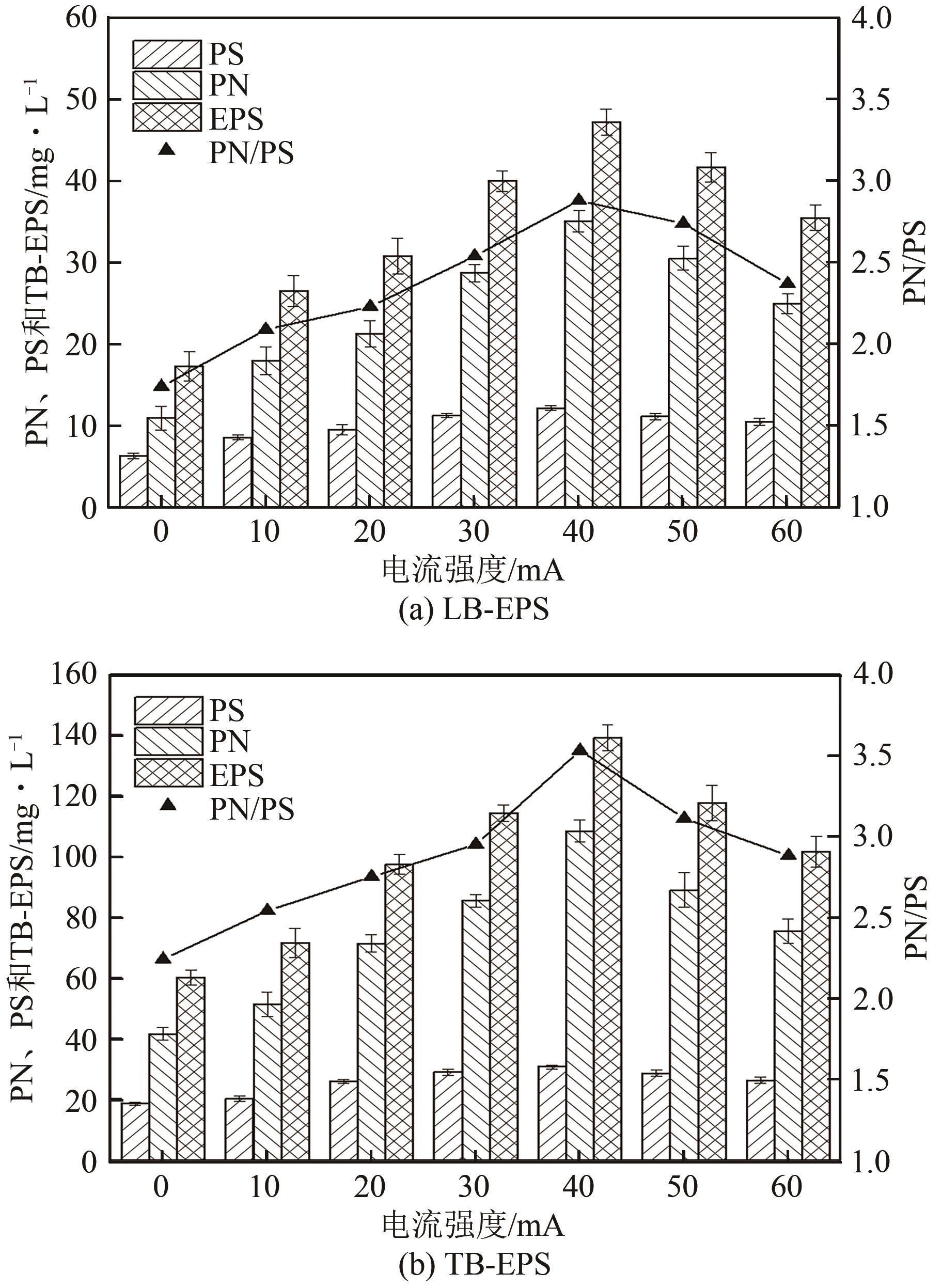| 1 |
张兰河, 王旭明, 邱晓春. 序批式生物反应器脱氮除磷理论与工艺[M]. 北京: 科学出版社, 2014: 1-2.
|
|
ZHANG Lanhe, WANG Xuming, QIU Xiaochun. Theory and process of nitrogen and phosphorus removal using sequencing batch reactor[M]. Beijing: Science Press, 2014: 1-2.
|
| 2 |
王文明, 危建新, 刘耘东, 等. 日本污水脱氮除磷深度处理工艺分析[J]. 环境工程学报, 2015, 9(3): 1194-1200.
|
|
WANG Wenming, WEI Jianxin, LIU Yundong, et al. Analysis on sewage advanced treatment process for nitrogen and phosphorus removal in Japan[J]. Chinese Journal of Environmental Engineering, 2015, 9(3): 1194-1200.
|
| 3 |
JIANG X, YING D W, YE D, et al. Electrochemical study of enhanced nitrate removal in wastewater treatment using biofilm electrode[J]. Bioresource Technology, 2018, 252: 134-142.
|
| 4 |
HAO R X, LI S M, LI J B, et al. Denitrification of simulated municipal wastewater treatment plant effluent using a three-dimensional biofilm-electrode reactor: operating performance and bacterial community[J]. Bioresource Technology, 2013, 143: 178-186.
|
| 5 |
HE Y, WANG Y H, SONG X S. High-effective denitrification of low C/N wastewater by combined constructed wetland and biofilm-electrode reactor (CW-BER)[J]. Bioresource Technology, 2016, 203: 245-251.
|
| 6 |
徐忠强, 郝瑞霞, 任晓克, 等. 包埋法固定化细胞技术用于三维电极生物膜反应器[J]. 中国给水排水, 2018, 34(19): 37-42.
|
|
XU Zhongqiang, HAO Ruixia, REN Xiaoke, et al. Application of entrapping method in three-dimensional biofilm-electrode reactor for advanced nitrogen removal[J]. China Water & Wastewater, 2018, 34(19): 37-42.
|
| 7 |
ZHANG L H, JIA J P, YING D W, et al. Electrochemical effect on denitrification in different microenvironments around anodes and cathodes[J]. Research in Microbiology, 2005, 156(1): 88-92.
|
| 8 |
SURESH A, GRYGOLOWICZ-PAWLAK E, PATHAK S, et al. Understanding and optimization of the flocculation process in biological wastewater treatment processes: a review[J]. Chemosphere, 2018, 210: 401-416.
|
| 9 |
ZHANG W J, CAO B D, WANG D S, et al. Influence of wastewater sludge treatment using combined peroxyacetic acid oxidation and inorganic coagulants re-flocculation on characteristics of extracellular polymeric substances (EPS)[J]. Water Research, 2016, 88: 728-739.
|
| 10 |
宋悦, 魏亮亮, 赵庆良, 等. 活性污泥胞外聚合物的组成与结构特点及环境行为[J]. 环境保护科学, 2017, 43(2): 35-40.
|
|
SONG Yue, WEI Liangliang, ZHAO Qingliang, et al. Chemical structure and environmental behavior of extracellular polymeric substances in sludge: a review[J]. Environmental Protection Science, 2017, 43(2): 35-40.
|
| 11 |
LIU X M, SHENG G P, LUO H W, et al. Contribution of extracellular polymeric substances (EPS) to the sludge aggregation[J]. Environmental Science & Technology, 2010, 44(11): 4355-4360.
|
| 12 |
YU G H, HE P J, SHAO L M. Characteristics of extracellular polymeric substances (EPS) fractions from excess sludges and their effects on bioflocculability[J]. Bioresource Technology, 2009, 100(13): 3193-3198.
|
| 13 |
BASUVARAJ M, FEIN J, LISS S N. Protein and polysaccharide content of tightly and loosely bound extracellular polymeric substances and the development of a granular activated sludge floc[J]. Water Research, 2015, 82: 104-117.
|
| 14 |
CAO B D, ZHANG W J, DU Y J, et al. Compartmentalization of extracellular polymeric substances (EPS) solubilization and cake microstructure in relation to wastewater sludge dewatering behavior assisted by horizontal electric field: effect of operating conditions[J]. Water Research, 2018, 130: 363-375.
|
| 15 |
SHI S N, XU J, ZENG Q Z, et al. Impacts of applied voltage on EMBR treating phenol wastewater: performance and membrane antifouling mechanism[J]. Bioresource Technology, 2019, 282: 56-62.
|
| 16 |
魏民, 郑国臣, 李建政, 等. 表征水体中生物活性及脱氢酶检测方法研究[J]. 东北水利水电, 2012, 30(8): 43-46, 72.
|
|
WEI Min, ZHENG Guochen, LI Jianzheng, et al. Study on detection method of biological activity and dehydrogenase in water[J]. Water Resources & Hydropower of Northeast China, 2012, 30(8): 43-46, 72.
|
| 17 |
LI S S, MA B R, ZHAO C K, et al. Long-term effect of different Cu(Ⅱ) concentrations on the performance, microbial enzymatic activity and microbial community of sequencing batch reactor[J]. Environmental Pollution, 2019, 255: 113216.
|
| 18 |
何志江, 赵媛, 张源凯, 等. 活性污泥表面性质对絮凝沉降性能与出水悬浮物的影响[J]. 环境科学, 2016, 37(8): 3135-3143.
|
|
HE Zhijiang, ZHAO Yuan, ZHANG Yuankai, et al. Influence of activated sludge surface properties on flocculating settling and effluent suspend solid[J]. Environmental Science, 2016, 37(8): 3135-3143.
|
| 19 |
张兰河, 张明爽, 郭静波, 等. Fe3+在A2O工艺缺氧区的转化规律及其对污泥絮凝性的影响[J]. 化工学报, 2019, 70(3): 1089-1098.
|
|
ZHANG Lanhe, ZHANG Mingshuang, GUO Jingbo, et al. Transformation of Fe3+ and its effect on anoxic sludge flocculation in A2O process[J]. CIESC Journal, 2019, 70(3): 1089-1098.
|
| 20 |
张兰河, 赵倩男, 张海丰, 等. Ca2+对污泥硝化活性和絮凝沉降性能的影响[J]. 环境科学, 2019, 40(9): 4160-4168.
|
|
ZHANG Lanhe, ZHAO Qiannan, ZHANG Haifeng, et al. Effect of Ca2+ on the nitrification activity and the flocculation and sedimentation performances of the activated sludge[J]. Environmental Science, 2019, 40(9): 4160-4168.
|
| 21 |
WANG K, SHENG Y X, CAO H B, et al. Impact of applied current on sulfate-rich wastewater treatment and microbial biodiversity in the cathode chamber of microbial electrolysis cell (MEC) reactor[J]. Chemical Engineering Journal, 2017, 307: 150-158.
|
| 22 |
王晓玲, 宋铁红, 殷宝勇, 等. 利用主要缺氧段ORP作为连续流单污泥污水脱氮除磷系统调控参数[J]. 环境科学, 2015, 36(7): 2617-2625.
|
|
WANG Xiaoling, SONG Tiehong, YIN Baoyong, et al. ORP in the main anoxic stage as the control parameter for nitrogen and phosphorus removal in the single sludge system with a continuous flow[J]. Environmental Science, 2015, 36(7): 2617-2625.
|
| 23 |
ZHANG L H, ZHAO Q N, ZHANG M S, et al. Mg2+ distribution in activated sludge and its effects on the nitrifying activity and the characteristics of extracellular polymeric substances and sludge flocs[J]. Process Biochemistry, 2020, 88: 120-128.
|
| 24 |
WANG Z C, GAO M C, WANG Z, et al. Effect of salinity on extracellular polymeric substances of activated sludge from an anoxicaerobic sequencing batch reactor[J]. Chemosphere, 2013, 93(11): 2789-2795.
|
| 25 |
李恕艳, 李吉进, 张邦喜, 等. 菌剂对鸡粪堆肥腐殖质含量品质的影响[J]. 农业工程学报, 2016, 32(S2): 268-274.
|
|
LI Shuyan, LI Jijin, ZHANG Bangxi, et al. Influence of inoculants on content and quality of humus during chicken manure composting[J]. Transactions of the Chinese Society of Agricultural Engineering, 2016, 32(S2): 268-274.
|
| 26 |
ZHANG B, CHEN N, FENG C P, et al. Adsorption for phosphate by crosslinked/non-crosslinked-chitosan-Fe(Ⅲ) complex sorbents: characteristic and mechanism[J]. Chemical Engineering Journal, 2018, 353: 361-372.
|
| 27 |
ZHU L, QI H Y, LYU M L, et al. Component analysis of extracellular polymeric substances (EPS) during aerobic sludge granulation using FTIR and 3D-EEM technologies[J]. Bioresource Technology, 2012, 124: 455-459.
|
| 28 |
袁冬琴, 王毅力. 活性污泥胞外聚合物(EPS)的分层组分及其理化性质的变化特征研究[J]. 环境科学, 2012, 33(10): 3522-3528.
|
|
YUAN Dongqin, WANG Yili. Study on the stratification components of extracellular polymeric substances (EPS) in activated sludge and their variation characteristics in physicochemical properties[J]. Environmental Science, 2012, 33(10): 3522-3528.
|
| 29 |
张兰河, 王佳平, 陈子成, 等. Ca2+对序批式生物反应器活性污泥性能的影响[J]. 化工进展, 2018, 37(9): 3675-3681.
|
|
ZHANG Lanhe, WANG Jiaping, CHEN Zicheng, et al. Effect of Ca2+ on the properties of activated sludge in the SBR[J]. Chemical Industry and Engineering Progress, 2018, 37(9): 3675-3681.
|
| 30 |
SU B S, QU Z, SONG Y H, et al. Investigation of measurement methods and characterization of zeta potential for aerobic granular sludge[J]. Journal of Environmental Chemical Engineering, 2014, 2(2): 1142-1147.
|
| 31 |
LI Z L, LU P L, ZHANG D J, et al. Population balance modeling of activated sludge flocculation: investigating the influence of extracellular polymeric substances (EPS) content and zeta potential on flocculation dynamics[J]. Separation and Purification Technology, 2016, 162: 91-100.
|
| 32 |
阮晓东, 刘俊新. 活性污泥TB-EPS的絮凝特性研究: 絮体的成长、破碎与再凝聚[J]. 环境科学学报, 2013, 33(3): 655-663.
|
|
RUAN Xiaodong, LIU Junxin. Flocculation characteristics of flocs formed by tightly bound extracellular polymeric substances(TB-EPS)—The formation, breakup and regrowth of flocs[J]. Acta Scientiae Circumstantiae, 2013, 33(3): 655-663.
|
 ), 袁镇涛1, 赵浩杰1, 赵君田2, 祝艺宁3, 陈子成1, 贾艳萍1, 田书磊4(
), 袁镇涛1, 赵浩杰1, 赵君田2, 祝艺宁3, 陈子成1, 贾艳萍1, 田书磊4( )
)
 ), YUAN Zhentao1, ZHAO Haojie1, ZHAO Juntian2, ZHU Yining3, CHEN Zicheng1, JIA Yanping1, TIAN Shulei4(
), YUAN Zhentao1, ZHAO Haojie1, ZHAO Juntian2, ZHU Yining3, CHEN Zicheng1, JIA Yanping1, TIAN Shulei4( )
)






